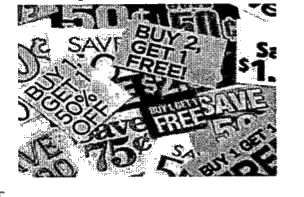Which statement below best describes the ways that energy and pesticides are transferred between levels in food chains ?
Available energy increases and pesticide concentrations increase as you move up a food chain.
Available energy decreases and pesticide concentrations increase as you move up a food chain.
Available energy decreases and pesticide concentrations decrease as you move up a food chain.
Available energy increases and pesticide concentrations decrease as you move up a food chain.
The correct Answer is:B
To answer the question regarding how energy and pesticides are transferred between levels in food chains, we can break down the concepts involved:
Step 1: Understand Energy Transfer in Food Chains
Energy transfer in food chains follows the 10% energy law. This law states that only about 10% of the energy from one trophic level is transferred to the next level. For example:
- If producers (first trophic level) produce 10,000 joules of energy, only about 1,000 joules will be available to herbivores (second trophic level).
- From herbivores to primary carnivores (third trophic level), only about 100 joules will be transferred.
- This pattern continues, with only 10 joules going to secondary carnivores (fourth trophic level) and 1 joule reaching top carnivores (fifth trophic level).
Step 2: Understand Pesticide Transfer in Food Chains
Pesticides, particularly non-biodegradable ones, undergo a process known as bio-magnification. This means that as you move up the food chain, the concentration of these pesticides increases. For example:
- A small amount of pesticide may be present in producers, but when herbivores consume these producers, they accumulate the pesticide in their bodies.
- As carnivores consume herbivores, they accumulate even higher concentrations of the pesticide.
- This results in top predators having the highest levels of pesticides in their bodies.
Step 3: Compare Energy and Pesticide Transfer
- Energy decreases at each trophic level due to the 10% energy law.
- Pesticide concentration increases at each trophic level due to bio-magnification.
Conclusion
The best statement that describes the transfer of energy and pesticides in food chains is that energy decreases while pesticide concentration increases as you move up the trophic levels.
Final Answer
The correct option is that energy decreases at each trophic level (following the 10% rule), while pesticide concentration increases (due to bio-magnification).
---
Energy transfer in food chains follows the 10% energy law. This law states that only about 10% of the energy from one trophic level is transferred to the next level. For example:
- If producers (first trophic level) produce 10,000 joules of energy, only about 1,000 joules will be available to herbivores (second trophic level).
- From herbivores to primary carnivores (third trophic level), only about 100 joules will be transferred.
- This pattern continues, with only 10 joules going to secondary carnivores (fourth trophic level) and 1 joule reaching top carnivores (fifth trophic level).
Pesticides, particularly non-biodegradable ones, undergo a process known as bio-magnification. This means that as you move up the food chain, the concentration of these pesticides increases. For example:
- A small amount of pesticide may be present in producers, but when herbivores consume these producers, they accumulate the pesticide in their bodies.
- As carnivores consume herbivores, they accumulate even higher concentrations of the pesticide.
- This results in top predators having the highest levels of pesticides in their bodies.
- Energy decreases at each trophic level due to the 10% energy law.
- Pesticide concentration increases at each trophic level due to bio-magnification.
The best statement that describes the transfer of energy and pesticides in food chains is that energy decreases while pesticide concentration increases as you move up the trophic levels.
The correct option is that energy decreases at each trophic level (following the 10% rule), while pesticide concentration increases (due to bio-magnification).
Similar Questions
Knowledge Check
Which of the following best describes the picture:
 ABonus offerBExchange offerCPrice-off offerDPrize contest
ABonus offerBExchange offerCPrice-off offerDPrize contestWhich of the following best describes the picture:
 ASales promotionBPersonal SellingCPublicityDAll of the above
ASales promotionBPersonal SellingCPublicityDAll of the aboveEnergy enters in a food chain through:
Aprimary consumersBsecondary consumersCtertiary consumersDproducers
Which of the following statement best describes an ovule ?
View SolutionDescribe three ways for the efficient use of energy
View SolutionEnergy transfer from one trophic level to other , in a food chain , is
View SolutionGive two differences between food chain food web.
View SolutionWhich statement best explains the generation of electrical energy in a simple cell ?
View Solution
